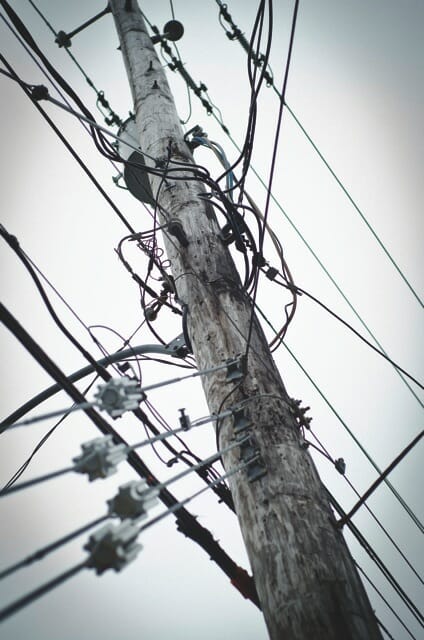
Motivation is a powerful force in the business world. Motivation leads small start-ups to create revolutionary products, raising them to the top of their field. Lack of motivation can just as easily pull a once proud company back down to earth. Motivation leads to innovation.
Nova Scotia’s energy supplier is sorely lacking motivation.
This January, residents of Nova Scotia were treated to a 9.1 per cent increase to their power rates—another in a long line of rate hikes. Nova Scotians are paying over 40 per cent more for their power than in 2002. Nova Scotia Power Inc. (NSPI), already the second most expensive power supplier in the country, will continue to raise their rates annually.
This is not sustainable. In an email, Liberal energy critic Andrew Younger says that, “Power rate increases have far surpassed [Consumer Price Index], salary, and pension increases and now rank as the second highest cost for some families, second only to housing.”
The province is stuck in energy limbo. People know they’re paying too much but are not sure who to turn to. Is it the fault of NSPI? Or is it the Utility and Review Board (UARB), the government body who regulates them? Is it simply uncontrollable fuel costs?
The short answer is a combination of all three. But the real problem is that our energy autocracy doesn’t allow anyone to take the blame.
Rising cost of fuel
Some of Nova Scotia’s energy problems can legitimately be explained by uncontrollable factors. Historically, the province has been heavily reliant on fossil fuels, especially coal, to keep the lights on. Coal traditionally accounted for 80-90 per cent of the province’s power. No surprise then that the province has been hit hard by a nearly 75 per cent spike in the cost of coal over the past six years.
This spike coincides with heavy government-mandated investment in renewable energy. For economic and environmental reasons, the Department of Energy has asked NSPI to be reliant on renewable sources for 40 per cent of its energy input by 2020. This creates a unique problem. NSPI has to cover huge infrastructure projects to build renewable capacity, while still providing energy from fossil fuels. Costly projects such as the Lower Churchill hydro development in Labrador and the Pubnico Wind-Farm are being added to existing power requirements.
To reduce costs, the province has shifted concentration to cheaper sources such as natural gas. Coal reliance is now down to 57 per cent.
Public to private
Prior to 1974, Nova Scotia’s power was distributed by multiple publicly owned utilities. The energy supply was then aggregated into the Nova Scotia Power Commission (NSPC), which would control the province’s energy until 1992. Some of these small renewable “legacy utilities” still provide power at a competitive rate. They are often community-owned through CEDIF’s (Community Economic Development Investment Funds).
In 1992, stuck with growing debt and a bloated workforce, Premier Donald Cameron privatized NSPC. This handed the entirety of the provinces power engine to what is now Emera Inc., who currently runs the provinces energy monopoly through NSPI.
Since then, Emera and its largest subsidiary have developed as a money-making enterprise. Emera reported profits of $1.6 billion in 2010, while drawing the ire of Nova Scotians unable to pay their heating bill.
According to the New Brunswick Energy Blueprint, Nova Scotians are paying 12.88 cents per kilowatt hour, as compared to 11.31 in New Brunswick and 11.4 in Newfoundland. Those figures are prior to the latest rate increase.
Melvin Cross, a professor of economics at Dalhousie, believes the decision was politically motivated, adding that it may have been short-sighted. “This notion that deficits and debts are bad regardless of everything is just wrong,” he says.
Who is taking the blame?
The manner in which NSPI was privatized has left a system void of accountability. If NSPI is lacking motivation, it’s brought on by the absence of another powerful emotion in the business world. In his recent article on e-monopolies, Harper’s writer Barry Lynn lists fear as a driving force behind North American industry. In America’s tech world, he says a lack of fear brought on by a change in anti-monopoly laws has left Americans subject to the, “ever more autocratic whims of the individuals who run our giant business corporations.”
In the power sector, a public utility is politically fearful of its constituents, while fear of free market take-over motivates a private corporation. NSPI operates without fear. Their monopoly over the power supply leaves them with no motivation to search for cheaper energy. Fear creates motivation, which leads to innovation.
Younger, MLA for Dartmouth-East, has introduced legislation to “end the monopoly.” His proposal allows those renewable legacy utilities along with start-ups access to the energy grid. This would force NSPI to price competitively. The privately owned grid is, “one of the greatest limiting factors to cheaper and cleaner energy,” he says. “If it was absolutely necessary to privatize the generation utility, the distribution grid should have unquestionably been kept in public hands.”
The closest thing Nova Scotia has to alternative power control is the COMfit program (Community Feed-In Tariffs). COMfit allows not-for-profit or community owned renewable utilities the opportunity to sell their power to NSPI. These projects are approved by NSPI’s exhaustive—and often debilitating—approval process and must be very small-scale.
A private monopoly remains in complete control of our power supply. When a corporation owns the supply and the distribution network, its customers are left vulnerable and unspoken for. In the case of NSPI, the only obstacle is the UARB.
John Merrick, residential advocate lawyer for the UARB, believes the system works quite well. “There are stringent checks and balances in place to ensure NSPI is acting prudently,” he says.
Younger isn’t sold. “This is something the government has a responsibility to address and in my view the government is not doing so adequately,” he says.
Regardless of their prudency, NSPI has no reason to seek out ways to provide cheaper power. Re-nationalizing NSPI is not an option for the province right now and it wouldn’t necessarily lead to lower prices. The expensive reality of the energy sector and rising inflation makes that unlikely. Opening up power to the free market won’t guarantee lower prices either. But at least with those two options, Nova Scotians have the opportunity to choose.
The power of choice is the backbone of a free-market democracy and may be enough to force the faceless controller of our power supply to work for us.
A business working for its customers would be a welcome change.








